| Wexford
Links with Argentina |
|
Home |
From
Kilrane to the Irish Pampas
The Story of John James Murphy
by Edmundo Murray |
| 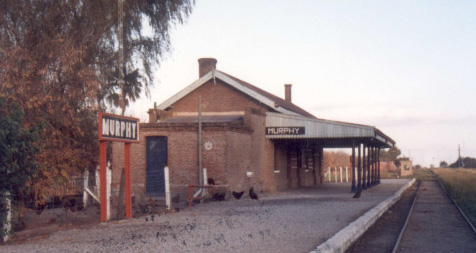
Partially
published by The Southern Cross, 127 N° 5860
(Buenos Aires, January 2002)
|
|
| In
a typical summer siesta break in Murphy, virtually everybody
goes home and takes a breather from the heat and from
their rural affairs. But once a year, this peaceful town
with a 4,000 population (1989) is invaded by a crowd of
over 14,000 fans who gather for the Amateur Theatre Festival
(6). With this exception, the region remains quiet
and pastoral, and its people unaware of the intense history
behind the name of their place.
Murphy belongs to the Argentinean Santa
Fe province, 150 km from Rosario and 18 km from Venado
Tuerto. It is located at 33°37’60S and 61°52’W, and
just 99 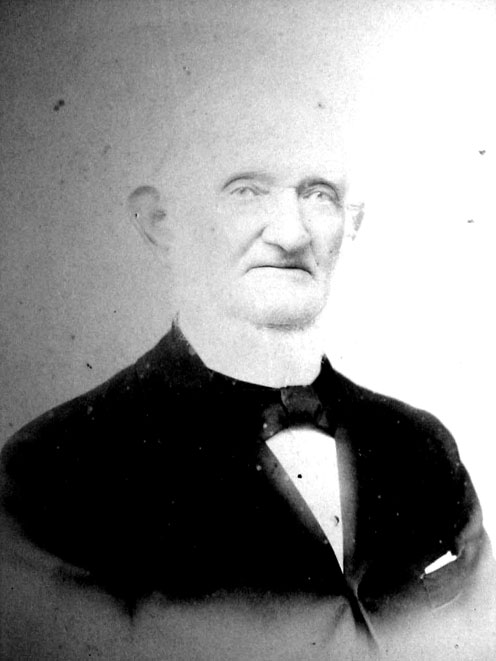 meters over the sea level. It bears the name
of John James Murphy, born in 1822 in Haysland,
Kilrane parish, Co. Wexford, son of Nicholas Murphy
and Katherine Sinnott (1). When he was 22, 'a very tall, slim and good-looking
youngster' (10), together with his cousins John and Lawrence
Murphy, and friends John O'Connor, Nicholas Kavanagh,
Thomas Saunders, James Pender, Patrick Howlin and others,
he emigrated to Argentina. Before leaving, John 'promised
his mother that when he had £100 he would go back to
see her' (10). meters over the sea level. It bears the name
of John James Murphy, born in 1822 in Haysland,
Kilrane parish, Co. Wexford, son of Nicholas Murphy
and Katherine Sinnott (1). When he was 22, 'a very tall, slim and good-looking
youngster' (10), together with his cousins John and Lawrence
Murphy, and friends John O'Connor, Nicholas Kavanagh,
Thomas Saunders, James Pender, Patrick Howlin and others,
he emigrated to Argentina. Before leaving, John 'promised
his mother that when he had £100 he would go back to
see her' (10).
On 13 April 1844, they left home in
Kilrane, using a cart to reach Wexford town (19 km).
Leaving from Wexford Quay, they sailed directly to Liverpool,
where they invested a small fortune of about £16 each
one to buy their tickets to South America in the brig
William Peile (£16 could be more than their entire
annual income). On 21 April 1844, with 115 Irish emigrants
on board and with the aid of Buenos Aires merchant John
James Pettit, the William Peile weighed anchor
at Liverpool under captain Sprott's command. She called
on 13 May at Saint Jago (Cape Vert islands), and she
was 'becalmed in mid ocean for three weeks' (10). After that, she probably called on Pernambuco, Bahia,
and Rio de Janeiro, and she finally sailed into the
mouth of the River Plate on Tuesday, 25 June 1844. These
splendid lads and their gallant journey inspired a teacher,
Walter MacCormack, to write his epic, characteristically
chauvinist poem 'The Kilrane Boys.' But the situation in the River Plate
was not bright. Rosas was leading his second government,
Montevideo was under Oribe's siege, and the French and
British armies blockaded Buenos Aires.
Murphy
landed with £1 in his pocket. According to his daughter,
when he left Ireland, 'it was principally due to the
treatment the Catholics were subjected to by the English
soldiers, all had to swear allegiance to the Throne
of England giving up their religion or they were ousted
out, no farms or business of any kind could prosper
under such a regime' (10). Once in Argentina, John took advantage of his British
citizenship and his Irish origin, which connected him
to the British merchants and the Irish Catholic priests
in Buenos Aires, respectively. In this way, like most
of his fellow countrymen, he stayed a short time in
the city and he immediately went to the 'camp' (8). With a friend, he 'went to work near Chascomús
with a very well known Argentine family, who never paid
them a cent for their work digging ditches; in those
days there were no fences, sheep were kept apart from
neighboring ones with these deep trenches. That was
his first work in the Argentine' (10).
For eleven years, he also worked hard in Chacabuco as
a sharecropper and tenant in the profitable sheep business.
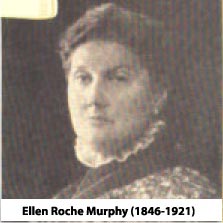 By 1855, he was already an 'estanciero' in Rojas and
Salto. On 27 May 1867, John got married to Ellen
Roche. Three years earlier, Ellen’s sister Elizabeth
Roche, married to John’s brother William Murphy. And
a third sister, Maggie Roche, married to other pioneer
of Southern Santa Fe, James De Renzi Brett, who would
later buy land for him (1). 'My parents had intended to be married in the
Merced Church. In those days, all the Irish were married
there, always of course by one of their Irish Priests,
but as cholera broke out in Buenos Aires, they were
married in Salto in May, 1867, by Father John Largo
Leahy. My father very wisely thought no one should come
near the city' (10). During Rosas times and afterwards, the men in the
army and the police 'were such savage bruts, the English
Minister of whom Rosas was terrified, ordered all British
residents to fly the English flag over their estancias,
which my father did. He always told us never to forget
he and my mother owed their lives to the English flag'
(10). By 1855, he was already an 'estanciero' in Rojas and
Salto. On 27 May 1867, John got married to Ellen
Roche. Three years earlier, Ellen’s sister Elizabeth
Roche, married to John’s brother William Murphy. And
a third sister, Maggie Roche, married to other pioneer
of Southern Santa Fe, James De Renzi Brett, who would
later buy land for him (1). 'My parents had intended to be married in the
Merced Church. In those days, all the Irish were married
there, always of course by one of their Irish Priests,
but as cholera broke out in Buenos Aires, they were
married in Salto in May, 1867, by Father John Largo
Leahy. My father very wisely thought no one should come
near the city' (10). During Rosas times and afterwards, the men in the
army and the police 'were such savage bruts, the English
Minister of whom Rosas was terrified, ordered all British
residents to fly the English flag over their estancias,
which my father did. He always told us never to forget
he and my mother owed their lives to the English flag'
(10).
In
1869, John Murphy was the owner of two estancias: ‘La
Flor del Uncalito’ in Salto and ‘La Caldera’ in Rojas.
He bought the first one in 1854 from John McKiernan
(topographic survey # 56 of 1855, originally 3/4 leagues,
1,748 hectares). Land in Rojas was purchased in 1864
(survey # 47 of 1864, 4,050 hectares). Later in 1872,
he acquired more land in Rojas (survey # 60 of 1877,
4,050 hectares).
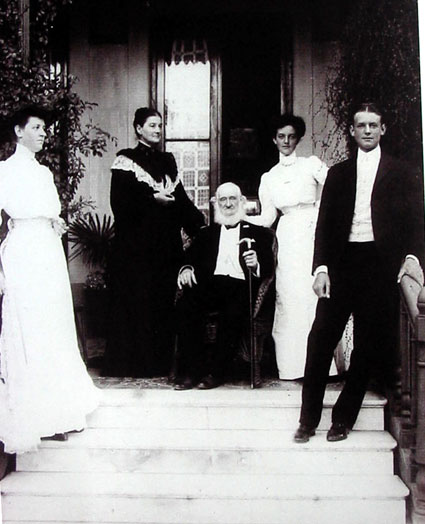
John James (centre) with part of his family
in or before 1895, probably in the house
of Almagro, Buenos Aires city. Left to right:
Isabel, Ellen Murphy (née Roche), J. J.,
Elisa Inés (Cissie), and Jack (or Nicholas).
Photo: Tim Warriner's collection, 2003. |
He
was the first landowner in Northern Buenos Aires to
enclose his holding with wire. When Newton enclosed
his quinta with wire, 'this gave my father the
idea of fencing in all his land. People thought him
mad. After six months they left unpaid, and worked their
way towards Salto' (10). Twenty years later, the ñandubay stakes and bulky
wire he used to prevent sheep loses and to stop the
Indian malón were still noticeable in rural Salto.
'He worked, or slaved rather, day and night and when
he had a little money saved, he rented a small piece
of land on the border of civilization; land there was
cheaper as the indians were practically on top of him.
During those years, he fell ill with small-pox, alone
in a shanty built by himself; an old criolla
neighbour went over every morning to leave him a jug
of fresh water, and empty out what had to be emptied.
This is all the care he had during that awful illness.'
Years later, when he went to Kilrane to visit his mother,
she 'thought he was a stranger when he arrived; it was
only when he spoke she recognised him as her handsome
John, and could only cry and cry. He had been so disfigured
with the small-pox' (10). John worked and worked and deserved his good luck.
He cared for his sheep day and night, 'sleeping little
as he had to go out at any hour when he heard the sheep
bleating, which they were mixing with the neighbouring
ones, and he could not afford to lose even one small
lamb. In 1859, they had a bad year, no rain for months
and months. [...] My father saved his sheep by constantly
throwing buckets and buckets of water over the parched
land and the sheep were able to eat the roots of grass
or weeds they found; they survived on that and water.
He did this day and night and the sheep would rush towards
him as soon as they saw him coming' (10).
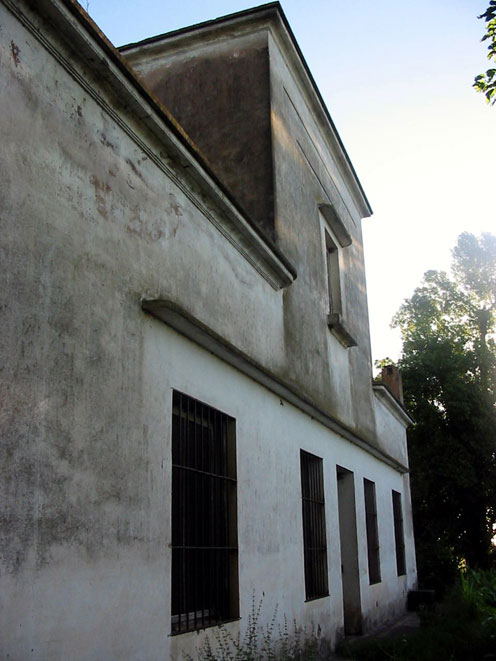
'La Flor del Uncalito' in Salto, Buenos Aires.
Compared to the mansions of other estancieros,
mid-19th century Irish sheep-farmer houses
were sober and functional, suggesting
their Protestant work ethic. A 'mirador' was
regularly built on top of the roof to survey
flocks and to anticipate uninvited visits
(i.e., gauchos and Indians). At the turn of
the century, the first generation of
Irish-Argentines was not so sober, and built
expensive houses, frequently on English country
house style, complete with landscape gardens,
tennis lawns, and other amenities. |
'Those
years in the camp were hard for women. It was safer
to have your babies at home, even if you lost some of
them. Doctors did not exist, not one beyond the centre
of Buenos Aires, and most of those with no medical certificate.
When shopping had to be done, John would ride or drive
in to the town of Salto and shop for my mother and their
neighbours, as they all said he had much better taste,
and better memory than their husbands. My mother made
all their clothes, shirts, trousers, everything. If
he spent more money than he had taken with him, he would
say to the criollo shopman, "I will sign for
these things", the criollo would answer "no necesitamos
su firma Don Juan, basta con la palabra del Inglés"
[no need for your signature, Don Juan, enough with a
word of the English]. He was very proud of that' (10).
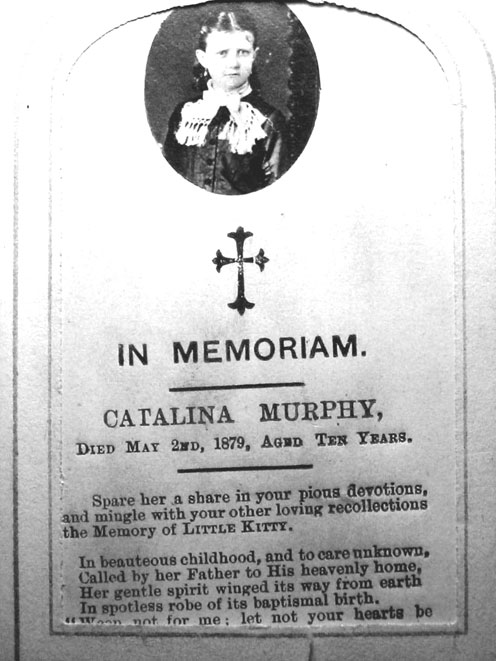 In 1878, John travelled with his family back to Ireland.
Being the elder brother, he had the idea of returning
definitively to Ireland to take care of the family farm.
However, two of his children, Catalina (Kitty) and Martin,
died there, and one son, Nicolás, was born in Mount
Julia, Co. Wexford. Kitty, 'a lovely fair haired
happy child of ten' died of scarlatina. 'In those years,
scarlatina was fatal. No one dared to go near
them for fear of contagion. The other children had been
sent In 1878, John travelled with his family back to Ireland.
Being the elder brother, he had the idea of returning
definitively to Ireland to take care of the family farm.
However, two of his children, Catalina (Kitty) and Martin,
died there, and one son, Nicolás, was born in Mount
Julia, Co. Wexford. Kitty, 'a lovely fair haired
happy child of ten' died of scarlatina. 'In those years,
scarlatina was fatal. No one dared to go near
them for fear of contagion. The other children had been
sent 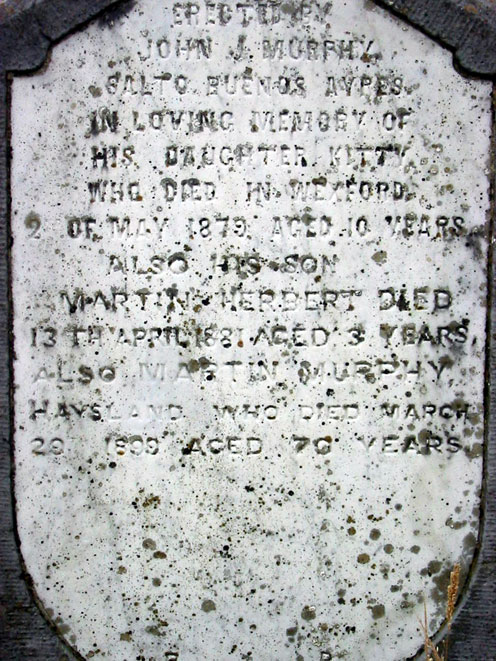 down to Haysland,
my father's old home, where his sister and invalid brother
lived. She and the children went to see the funeral
passing towards Kilrane churchyard. My mother said it
nearly broke her heart to see the three small ones on
the side of the road watching the funeral pass, not
realising it was their little sister. This was too much
for my parents. My father said "I am leaving and not
coming back: the Argentine has never treated me like
this." He never left the Argentine again.' (10). These sad events, and the relatively poor economic
situation in Ireland, convinced the family to go back
to the River Plate. down to Haysland,
my father's old home, where his sister and invalid brother
lived. She and the children went to see the funeral
passing towards Kilrane churchyard. My mother said it
nearly broke her heart to see the three small ones on
the side of the road watching the funeral pass, not
realising it was their little sister. This was too much
for my parents. My father said "I am leaving and not
coming back: the Argentine has never treated me like
this." He never left the Argentine again.' (10). These sad events, and the relatively poor economic
situation in Ireland, convinced the family to go back
to the River Plate.
They
returned to Argentina on January 1882. Under the favourable
conditions for settlers created after the war against
the Indians, on 15 March 1883, Murphy bought from Eduardo
Casey eight leagues (18,600 hectares, 46,000 acres)
of campo flor in Southern Santa Fe, one of the
best regions of the pampas (4).
With
the help of his family and others, he immediately settled
the area and began wire fencing, building puestos
and planting trees in his new estancia ‘San Juan' (2). He paid off the last of the debt on San Juan the
year before his death. 'His ambition was to die free
of debt [...]. His place in Rojas had been paid off
long before, also the land he bought in Salto from Pacheco
(10).
| By
the end of the century, the prosperous sheep business
was declining, and was replaced by cattle, and later
by grain. Murphy started to let his land to Italian
settlers, who dedicated mostly to corn and wheat.
On 13 July 1909, John Murphy died in a house in
Almagro (Rivadavia 4191) at 87 years old, leaving
a large family and quite a serious fortune. 'He
caught cold that developed into bronchitis, bronchopneumonia
followed, and he died in five days without suffering
thank God. He had spent 65 years working and lived
to see his ambition come true, to leave us with
no debts' (10). He was buried in Recoleta cemetery, in the heart
of Buenos Aires city, in an austere monument with
a Celtic Cross. |
|
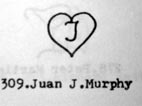 Most of his land in Santa Fe was sold to 'colonos,'
some of them being ejected by his daughter Elisa Murphy
de Gahan (3), who was living in England, in a way that makes
us think about the evictions of destitute cottiers just
before the 19th century Irish Famine. However, her descendants
argue that 'when she died in 1964, she left her state
to be divided among her eight children or their heirs,
which naturally meant that it had to be sold so that
it could be divided. Unfortunately, it had been mostly
rented out [...] to some French immigrants, and had
been completely neglected - for example, all the windmills
had been allowed to collapse, so that the land could
no longer be farmed - and this meant that it could
only be sold about six years after her death, and at
a very low price. She lived in England only in the years
between the two wars [...]. When he [her husband] died
she returned to Argentina, living mainly in the Alvear
Palace Hotel in Buenos Aires. It is gross misrepresentation
to describe her as responsible for any ejections that
happened years after her death, and were in any case
only what the tenants deserved in the circumstances.
The management of the land and its sales were handled
by the firm of Bullrich' (9). Sources agree on the fact that there were tenant
evictions. Whether they were justified or not, and the
responsibility was of Murphy's descendants or their
administrators, this unfortunate events contributed
to develop the negative perception of the ingleses
(i.e., Irish settlers) and their Pampa Gringa
among some of the newly arrived immigrants in the region. Most of his land in Santa Fe was sold to 'colonos,'
some of them being ejected by his daughter Elisa Murphy
de Gahan (3), who was living in England, in a way that makes
us think about the evictions of destitute cottiers just
before the 19th century Irish Famine. However, her descendants
argue that 'when she died in 1964, she left her state
to be divided among her eight children or their heirs,
which naturally meant that it had to be sold so that
it could be divided. Unfortunately, it had been mostly
rented out [...] to some French immigrants, and had
been completely neglected - for example, all the windmills
had been allowed to collapse, so that the land could
no longer be farmed - and this meant that it could
only be sold about six years after her death, and at
a very low price. She lived in England only in the years
between the two wars [...]. When he [her husband] died
she returned to Argentina, living mainly in the Alvear
Palace Hotel in Buenos Aires. It is gross misrepresentation
to describe her as responsible for any ejections that
happened years after her death, and were in any case
only what the tenants deserved in the circumstances.
The management of the land and its sales were handled
by the firm of Bullrich' (9). Sources agree on the fact that there were tenant
evictions. Whether they were justified or not, and the
responsibility was of Murphy's descendants or their
administrators, this unfortunate events contributed
to develop the negative perception of the ingleses
(i.e., Irish settlers) and their Pampa Gringa
among some of the newly arrived immigrants in the region.
| 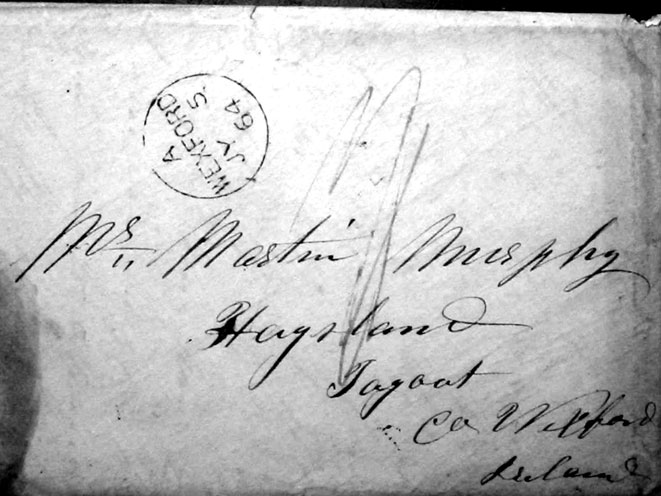
Letter sent by John James Murphy on 27 May
1864 from Buenos Aires, and received
by his brother Martin on 5 July 1864
in Haysland, Co. Wexford.
|
On
22 January 1911, the railway arrived and Estación
Murphy was officially opened in the 86 hectares
compulsory purchased by the Ferrocarril Central
Argentino to John Murphy heirs. The first settler
was the Spanish 'pulpero' Francisco Sisteré.
Others came afterwards to live around the railway
station. In 1931, the name of the town was changed
to Presidente Uriburu, and in 1948, to
Pueblo Chateaubriand, Estación Murphy.
Finally, in 1966, it was officially named just
like that: Murphy, the town of soft siestas
and amateur theatre (2).
|
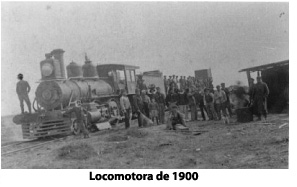 |
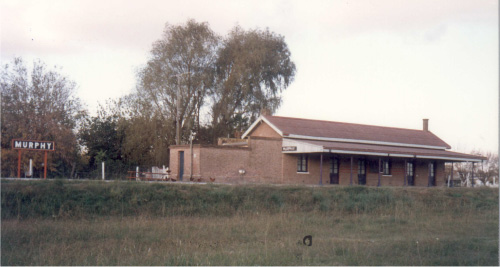
|
|
| Sources |
Top |
| 1)
Coghlan, Eduardo, Los Irlandeses en Argentina: su Actuación
y Descendencia (Buenos Aires, 1987) |
| 2)
Ortigüela, Raúl, Murphy, en Tierras Benditas (Venado
Tuerto, 1991) |
| 3)
Ortigüela, Raúl,,Raíces Celtas (Córdoba, 1998) |
| 4)
Landaburu, Roberto, Irlandeses: Eduardo Casey, Vida
y Obra (Fondo Editor Mutual Venado Tuerto, 1995) |
| 5)
Patrick McKenna, The Formation of the Hiberno-Argentine
Society in: "English Speaking Communities in Latin
America", ed. Oliver Marshall (London: Macmillan, 2000) |
| 6)
Private communications with Agustín Di Mella (Cooperativa
de Electricidad y Servicios Públicos de Murphy) |
| 7)
Website http://www.irlandeses.com.ar/ |
| 8)
Sábato, Hilda, Juan Carlos Korol, Cómo fue la Inmigración
Irlandesa en Argentina (Buenos Aires: Plus Ultra,
1981) |
| 9)
Warriner Gahan, Timothy - private correspondence (30 July
2002) |
| 10)
Murphy, Emily (?), Memoirs of my Father John James
Murphy, Private Collection of the Murphy family -
Mary Anglim (Kilmore, Co. Wexford, August 2002) |
|
Acknowledgements:
many thanks to Mary Anglim, from Kilmore, Co. Wexford, who generously
shared with me her family collection, to Timothy Warriner, London,
for his accurate comments about John J. Murphy's properties, and
to the late Statia Joyce, who during her last days helped me to
identify many characters in old photographs.
| The
Kilrane Boys, by Walter McCormack |
| (ed.
Joseph Ranson, C.C., Songs of the Wexford Coast,
Wexford: John English & Co., 1975, first ed. 1948.),
p. 74. |
|
On
the thirteen day of April in the year of Forty-four
With the bloom of Spring the birds did sing around green
Erin's shore
The feathered train in concert their tuneful notes did
strain,
To resound with acclamations that echoed through Kilrane. |
Twelve
matchless youths I see approach, most splendid they appear.
They leave farewell with all their friends, their neighbours
and parents dear.
As usual to their bosoms flew some mirth for to display;
They cried "Adieu, God be with you; we're bound for Amerikay. |
My
darling boys, what is the cause or the reason you must
go,
To leave your native country for a shore you do not know,
Where you'll profess the holy Faith from which you ne'er
did stray;
Ah, what dull news have you induced to wild Amerikay? |
Foul
British laws are the whole cause of our going far away;
From the fruits of our hard labour they defraud us here
each day.
To see our friends in slavery tied with taxes for to pay.
Ere we'll be bound to such bloodhounds we'll plough the
raging sea. |
There's
Billy Whitty and his bride, their names I will first sound,
John Connors and John Murphy from Ballygeary town.
Mick Kavanagh and Tom Saunders, two youths that none can
blame,
James Pender, Patrick Howlin and four from Ballygillane. |
Larry
Murphy from Kilrane joined them in unity:
They're bound for Buenos Aires, the land of liberty. |
On
Wexford's Quay the thirteenth day were many go bid farewell;
They stayed conversing with their friends till sound of
the last bell.
Then they gave three cheers for Ireland that echoed with
hurray,
And with one for Dan O'Connell they boldly sailed away. |
Oh,
now they're on the ocean, may the angels be their guide
And send them safe through angry wave, o'er rock and welling
tide;
That we may live to meet again in health and wealth and
store.
God send them safely to their friends the blooming Kilrane
corps. |
The
editor Joseph Ranson remembers that he 'got this song from Nick
Corish, St. John's Road, Wexford, Feb., 1943. Nick got the song
from Paddy O'Brien, ex-N.T. (National Teacher), Rosslare. The author
was Walter McCormack of the Bing, Kilrane. A centenary celebration
was held in Kilrane on April 11th, 1944, to honour the memory of
the emigrants, when the cart, which brought some of the emigrants
into Wexford, was drawn in the procession' (p. 75). Mgr. Joseph
Ranson was ordained in 1930 in Salamanca, and was parish priest
of St. Aidan. In 1949, the Irish Archbishop appointed him
to the Directorship of the Irish College in Salamanca. In 1955,
he was Administrator of the Enniscorthy Cathedral. Ranson, a distinguished
historian and literary critic, died on 27 November 1964 (Coghlan
1987: 151).
|
Edmundo
Murray, Irish Argentine Historical Society © 2003 |
Last
Update: 20 April 2004 |
|
|


 meters over the sea level. It bears the name
of John James Murphy, born in 1822 in Haysland,
Kilrane parish, Co. Wexford, son of Nicholas Murphy
and Katherine Sinnott (
meters over the sea level. It bears the name
of John James Murphy, born in 1822 in Haysland,
Kilrane parish, Co. Wexford, son of Nicholas Murphy
and Katherine Sinnott (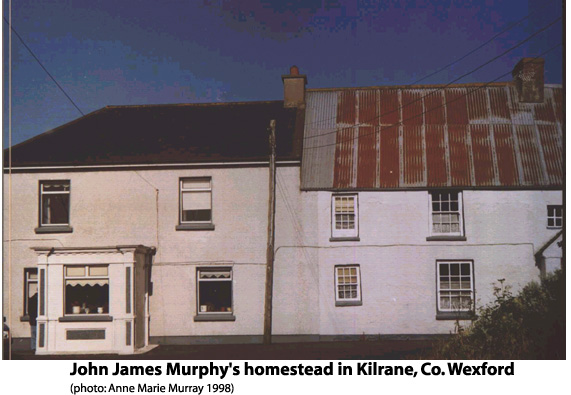
 By 1855, he was already an 'estanciero' in Rojas and
Salto. On 27 May 1867, John got married to Ellen
Roche. Three years earlier, Ellen’s sister Elizabeth
Roche, married to John’s brother William Murphy. And
a third sister, Maggie Roche, married to other pioneer
of Southern Santa Fe, James De Renzi Brett, who would
later buy land for him (
By 1855, he was already an 'estanciero' in Rojas and
Salto. On 27 May 1867, John got married to Ellen
Roche. Three years earlier, Ellen’s sister Elizabeth
Roche, married to John’s brother William Murphy. And
a third sister, Maggie Roche, married to other pioneer
of Southern Santa Fe, James De Renzi Brett, who would
later buy land for him (

 In 1878, John travelled with his family back to Ireland.
Being the elder brother, he had the idea of returning
definitively to Ireland to take care of the family farm.
However, two of his children, Catalina (Kitty) and Martin,
died there, and one son, Nicolás, was born in Mount
Julia, Co. Wexford. Kitty, 'a lovely fair haired
happy child of ten' died of scarlatina. 'In those years,
scarlatina was fatal. No one dared to go near
them for fear of contagion. The other children had been
sent
In 1878, John travelled with his family back to Ireland.
Being the elder brother, he had the idea of returning
definitively to Ireland to take care of the family farm.
However, two of his children, Catalina (Kitty) and Martin,
died there, and one son, Nicolás, was born in Mount
Julia, Co. Wexford. Kitty, 'a lovely fair haired
happy child of ten' died of scarlatina. 'In those years,
scarlatina was fatal. No one dared to go near
them for fear of contagion. The other children had been
sent  down to Haysland,
my father's old home, where his sister and invalid brother
lived. She and the children went to see the funeral
passing towards Kilrane churchyard. My mother said it
nearly broke her heart to see the three small ones on
the side of the road watching the funeral pass, not
realising it was their little sister. This was too much
for my parents. My father said "I am leaving and not
coming back: the Argentine has never treated me like
this." He never left the Argentine again.' (
down to Haysland,
my father's old home, where his sister and invalid brother
lived. She and the children went to see the funeral
passing towards Kilrane churchyard. My mother said it
nearly broke her heart to see the three small ones on
the side of the road watching the funeral pass, not
realising it was their little sister. This was too much
for my parents. My father said "I am leaving and not
coming back: the Argentine has never treated me like
this." He never left the Argentine again.' (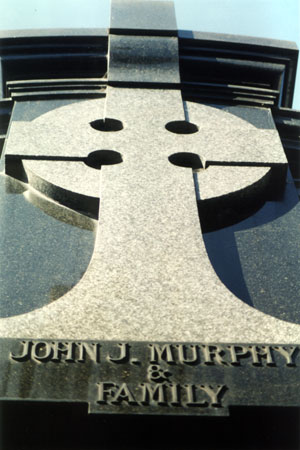
 Most of his land in Santa Fe was sold to 'colonos,'
some of them being ejected by his daughter Elisa Murphy
de Gahan (
Most of his land in Santa Fe was sold to 'colonos,'
some of them being ejected by his daughter Elisa Murphy
de Gahan (

